The next morning, we woke up and breakfast was pretty much ready. A note on Japanese ryokans: they typically have fairly late checkin times, and very early checkout times. Late checkout, as is common in North America (particularly with status), is almost unheard of, and certainly not to the tune of 4pm: I can imagine a hotel allowing noon under extreme duress, but 9-10am is usually much more common. On the one hand, it’s kind of stressful, since you must get up early and get out, but on the positive side, it means you don’t need to worry about wasting half a day slobbering about the hotel: up, and out. In ryokans, where (set) breakfast is made to order specifically for you, you also have a specific time window during which to eat it – unless you like cold breakfast, that is. So we had ours scheduled for 8am, with a checkout time of 10 (and, by my plans, 9am to get out).

Just before leaving Nishioka-Onsen, though, we wanted to check out a little store which was closed the day prior, and which seemed rather interesting: a “pudding” shop. These are quite popular in Japan, and tend to have devout followings. Many of the major brands (Morozoff, Koenigs-Crosse, and many others) have their own brands; I am also completely cognisant of the fact that likely nobody reading this has the remotest idea of what a “pudding” is in the Japanese context, nor what makes it special, nor why it even matters. But it does.
Japan, and I am making a bold, sweeping statement here, has a tendency to not so much invent, but rather, improve others’ inventions. This is very obvious in pastries, for instance: while traditional Japanese sweets are often considered inedible by foreigners (or, in a softer version, “unique and worth trying once”), their Western-style pastries are pretty much to die for. They did not invent castella, nor did they invent the pudding. They are variations of existing delicacies from their respective countries (castella from Portugal, pudding … from who knows where, but certainly not Japan, and baumkuchen from Germany) that have a tendency to suck, comparatively, in their home locations. The Portuguese have been said to note that the Japanese version of castella is significantly better. All this to say that when you find one of these shops that specialise in some “borrowed and improved” food, it’s probably worth checking out. To add to that – we’re in the woods, so to say, in the middle of nowhere. Does one think I would really pass on the chance to try some local variant of something I like 🙂
The shop turned out to be run by the son of the adjunct ryokan. As it turns out, the ryokan itself is variably busy – some days completely shut due to lack of tourists, and some days rather busy. So the son, for want of anything better to do with his life, runs a pudding shop. Or helps his parents in the ryokan. I suppose it’s better than him being on the street shooting crystal meth, but it’s still a little bit peculiar – not many mid-20 year olds go home to run a pudding shop. But I digress.
The store was closed on the first day, but I made certain to take a picture to ensure we remember to come back:
The inside was STRAIGHT out of a Tadanobu Asano movie. You need to look him up if you do not know him – I cannot explain it, but suffice it to say that the ultimate arthouse weird you can imagine – this is what it was. It was such a random, tasteless aggregation of random Western paraphernalia that it had a total, coherent charm of its own – akin to a Malevich or a Kandinsky painting, most of which make absolutely no sense at all, but in most of which all the art hippies tend to find at least three variatons of God.
We bought our pudding (which actually turned out to be rather expensive – but I will save the suspense, especially considering I forgot to take pictures of it for posterity’s sake, and when we ate it later that evening, it turned out to be amazing – so WELL worth the money and effort spent).
On leaving our ryokan, as is traditional, the owner saw us off.
And so, we come to our main reason for coming to Tottori. I did not go here the first day because I wanted to allocate sufficient time and respect, of sort, to this place, because I had medium to high expectations from it. Admittedly, I was somewhat concerned: on the one hand, I was about to experience something pretty awesome. On the other hand, there is a tendency in Japan to make a sand dune out of a grain of sand, to twist a metaphor, so they have huge pilgrimages to the most mundane things because either a famous TV celebrity went there, or because it was featured on NHK. It was kind of like that with the Heso Koen last year, where I certainly enjoyed it, but purely from a checkmark point of view – “I’ve been here” – none of my co-travellers were nearly as enthused (at least, not until the evil overlord Magneto’s world-domination laboratory telescope experience at the end). So I had mixed feelings about this place.
What is it?
A sand dune. Yup. In the middle of Japan, right on the shore of the Sea of Japan (or as all the neighbouring nations insist on renaming it despite it having been called this for hundreds of years, “Some Blue Sea” or something like that).
With bated breath, we came to the “entrance” (how do you have an “entrance” to a sand dune?!?)
I saw sand in the background, which looked promising. I also saw that corporate Japan seems to endorse it (it is completely beyond me why you would go to a sand dune in a 3-piece suit, but then again, see above about there being a tendency to visit any famous place, which also tends to make little worthless places into glorious meccas of pilgrimage):
Looking good so far…. narrow passage into the dune:
… and after we pass through this narrow passage, holy SHIT! (hey, if The Economist has no qualms about using the word, why should I, right?). Anyway, that’s exactly the emotion I felt.
This place is VAST. I was literally expecting about a few hundred square meters, maybe a hectare of sand, with lots of picture-snapping tourists, all making a huge deal out of it. I didn’t expect to find what amounts to a small desert. All those dots are people, FAR away in the distance.

Far, far away, a very steep sand dune had a bunch of people excited to climb it:
I will spare the myriad pictures I took of the way to the top of the dune itself, but once we climbed onto it, the view was absolutely magical.
In one direction, an impossibly blue sky and an impossibly blue sea…
… and in the other, sand as far as eyes could see followed by lush greens and snow-covered mountains (!!!).
A completely awe-inspiring, unlikely combination that I honestly did not expect to find, and was … for lack of a better word, awed by. The most impressive aspect of it was the yellowness of the sand contrasted with the blueness of the water and the sky – it was almost surreal in its beauty. I didn’t even tweak the colours of the above pictures too much. It was, simply put, impossibly blue.
Of course, men in suits were to be found here, too. It looks like his job is to take pictures, based on how businesslike his picture-taking appears to be.
After spending some time enjoying this unexpected gem of a find, we walked back to the entrance to the dune. Of course, this is a major tourist spot, so what goes in deserts? Ice cream, you say? No, that’s outside the entrance. Inside, there are …… well, obviously.
I guess it was felt that if the tourists came to this desert and found no camels, they would leave disgruntled, tell their friends, and nobody would ever come again. So they imported a few camels – some from Egypt, some from Mongolia. They seem to be pretty satisfied with their life here.
This was a very interesting experience. First, it solidified my belief that you can find EVERYTHING in Japan. Despite being a small country, I am constantly reminded that you don’t need to go anywhere to experience everything. It’s kind of like a compact version of Russia or the USA – countries that span time zones and latitudes, and where the flora and fauna spans the gamut from oranges and palm trees to stumps of ice and angry birds who are stuck on ice. In Japan, everything is more compact, and whatever isn’t indigenous, is imported for a complete experience. From Tobu World Square, where one can see all the major world monuments and buildings faithfully recreated to scale, to aquariums featuring giant sharks, to the tropical paradise that is Okinawa to the frozen wastelands of Hokkaido (okay, maybe that’s a bit of a stretch, but it IS pretty far north) to, apparently, even the desert of Tottori now – Japan truly does have it all.
The funny thing is that I was just in Dubai, and I really wanted to see the desert – this is why I wanted to drive to Al Amn, but never got a chance to. I am happy I was able to see it, complete with camels, in good old Japan.
Second, I realised that I have a new to-do on my list: I must come back here in winter. Considering Tottori gets a reasonably high amount of snow, the entire desert gets covered by snow. Have you ever seen snow in the desert? Yeah, neither have I.
Third, it was unsettling to walk on the sand for one curious reason (which sort of ties into #2 above). We went barefoot, because what normal person walks a kilometre in the sand in boots – but they were actually renting out rubber boots to walk around, which was somewhat comical. In the middle of summer, apparently, the sand is hot enough to burn – but this was April, so it wasn’t. The unsettling part was this: it was VERY hot (as deserts tend to be), until the wind blew. With the wind, it was actually quite chilly – and as a result, we were dressed in long-sleeve shirts, and light jackets. IN THE DESERT. And barefoot. Indeed, a very, very strange experience.
So that pretty much covered the main reason why we went to Tottori. After this, we had no specific plans but for returning home, so we decided to stop by Kanikkokan – a crab sanctuary and aquarium (and, of course, a crab restaurant nearby).
A variety of crabs were on display; none were actually sold or edible, which probably reduced the fun factor for many, but in all seriousness, it’s an actual conservation organisation with tons of aquariums and tanks in the back designed to protect endangered crab species.
Some of them looked like you wouldn’t want to meet them alone in a dark alley…
And others looked like … yeah, also like you wouldn’t want to meet them in a dark alley.

It was time to head back after this. But not before seeing a prime example of Japanese domestic manufacturing – a Mitsuoka Ryoga, a particularly rare and unique brand of cars that has never been exported – and I think it should be:
… and a ridiculous colour VW van:
We were treated to a beautiful show of sakura on the local river, which reminded me of Kamogawa in Kyoto – and which tends to be a similar sight in many cities.
And in parting, a shot of an entrance to a temple where the liveliness of the greenery in the back seemed to contrast with the finality of the stone monument:
With that, our adventure in Tottori was over, and it was time for new discoveries.


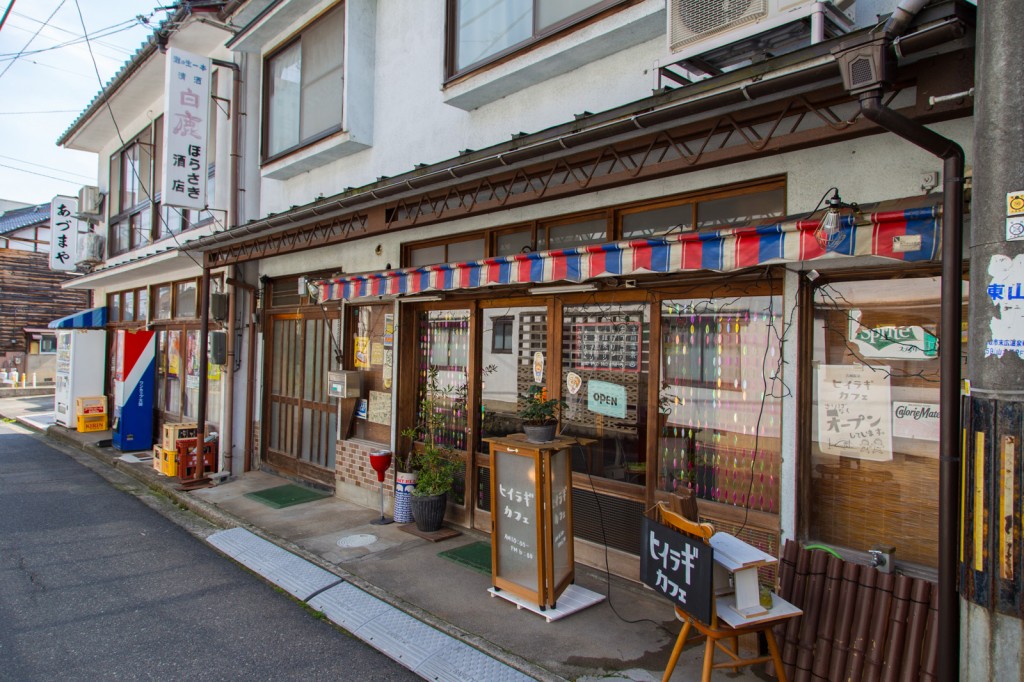

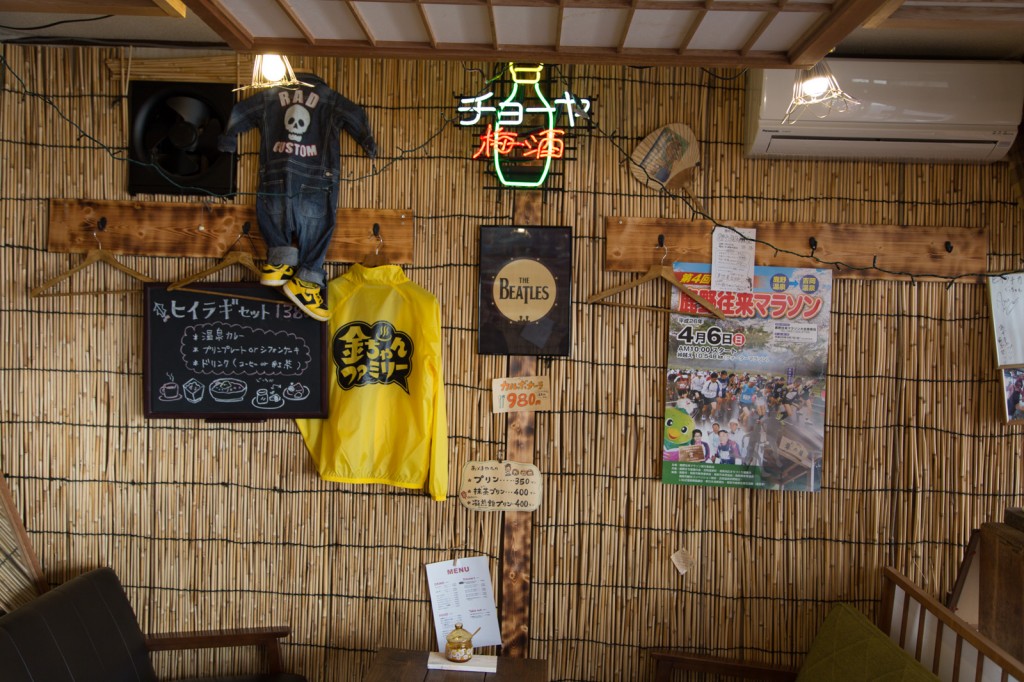
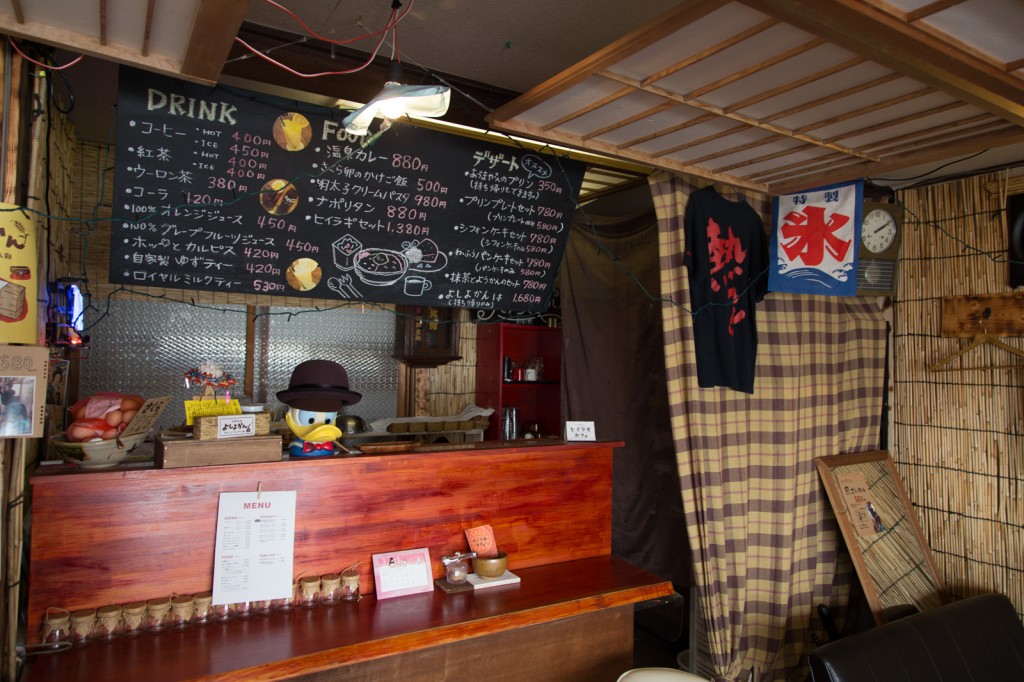

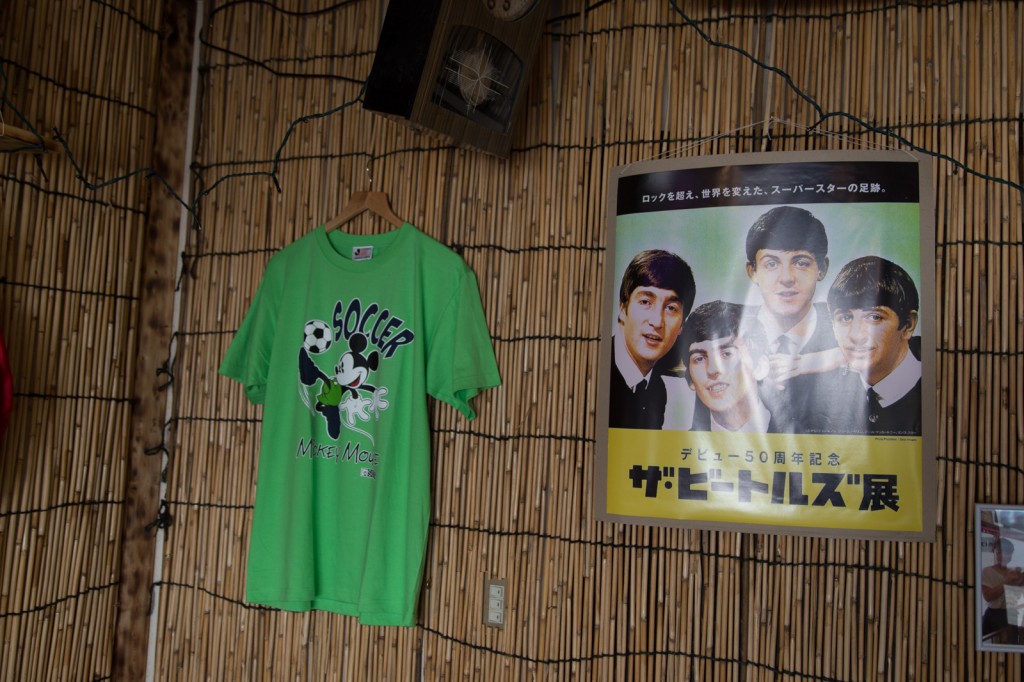
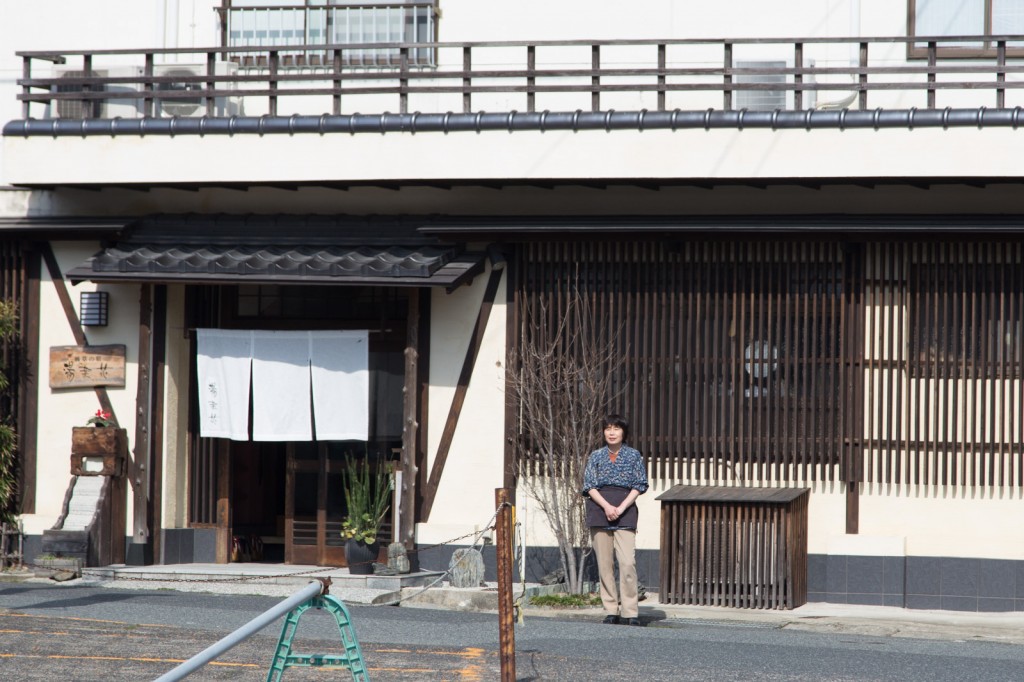



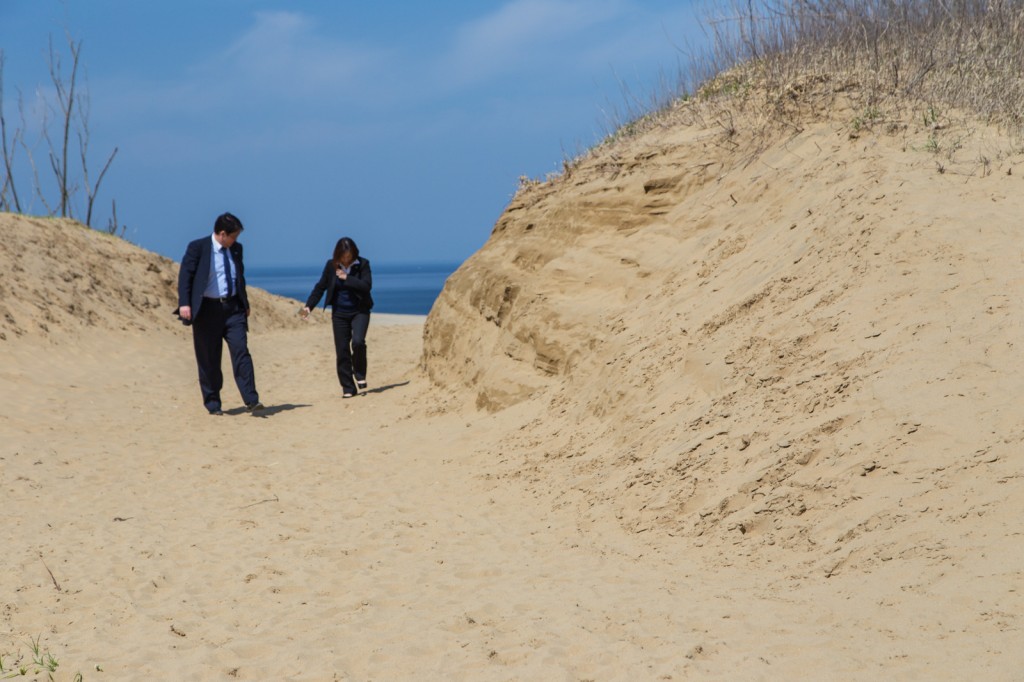

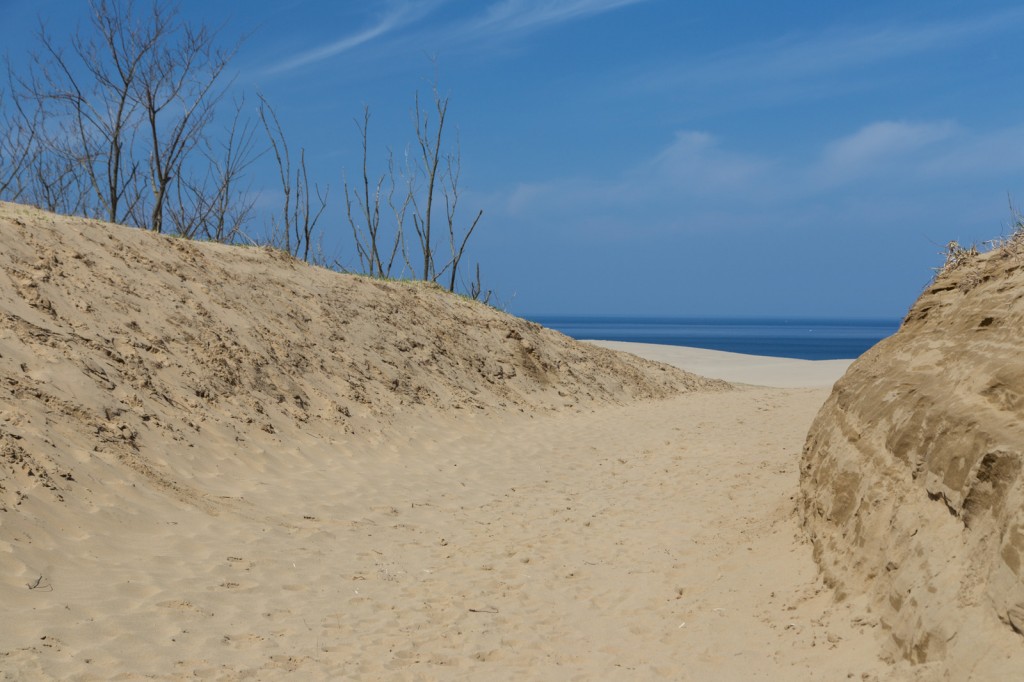

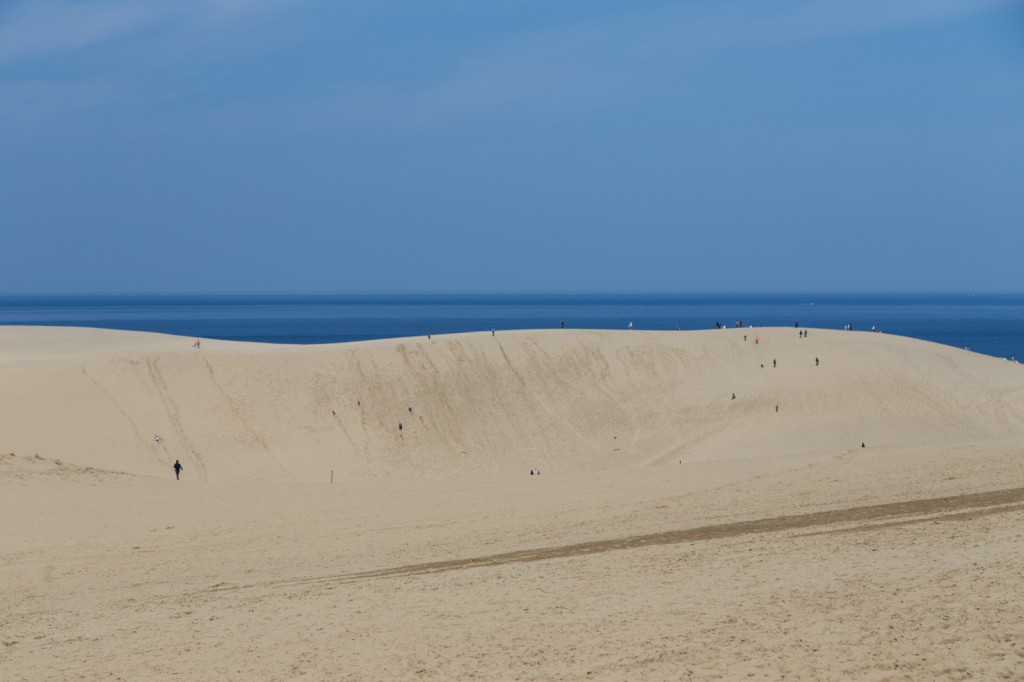
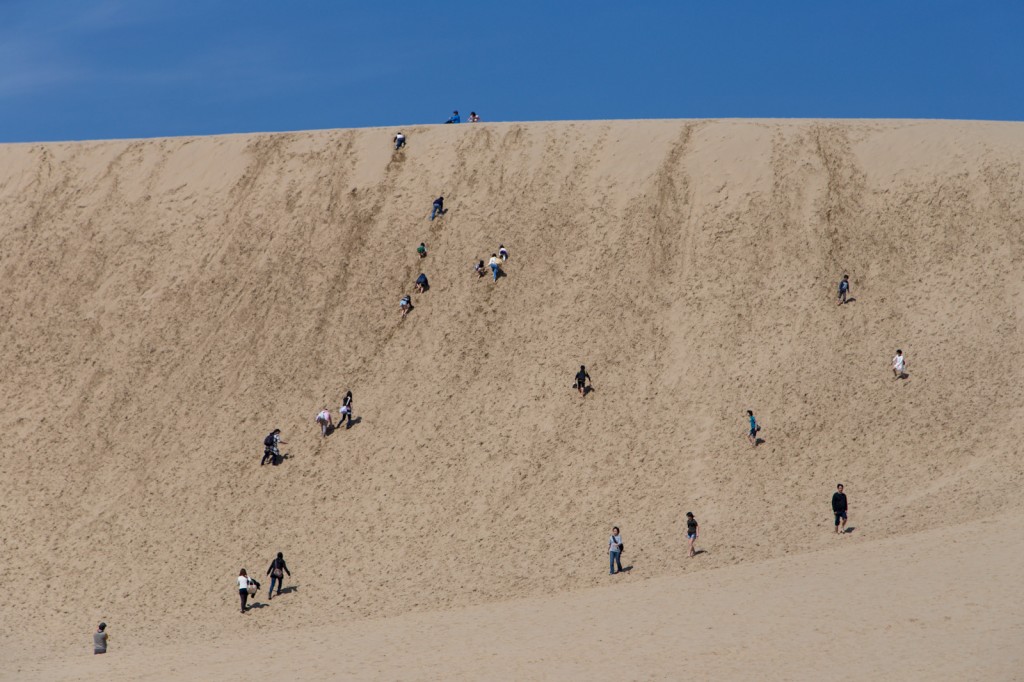

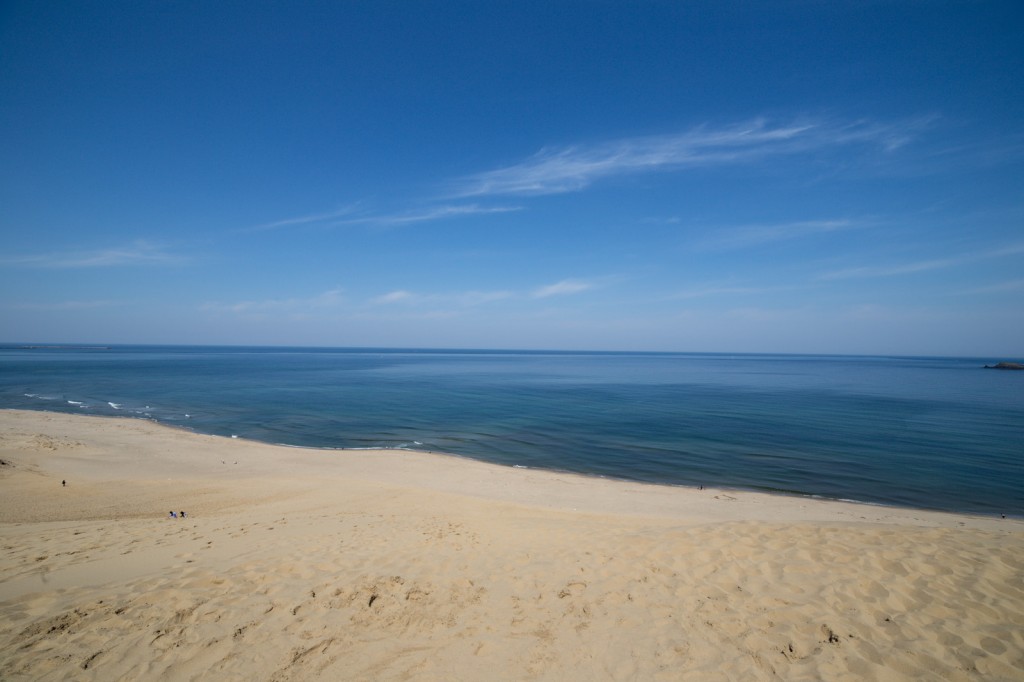

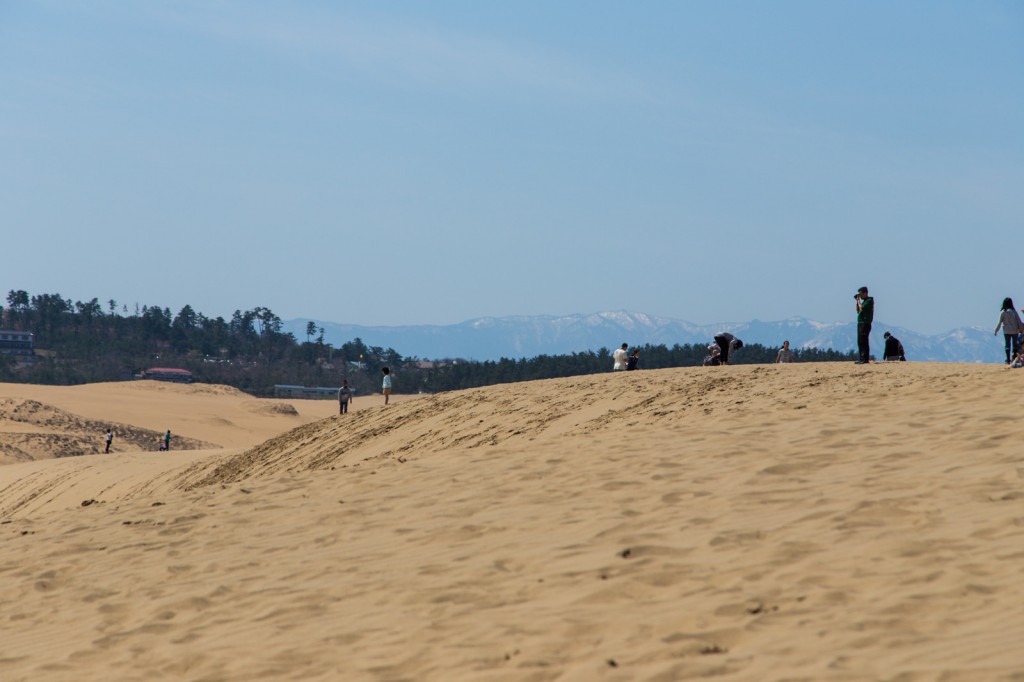



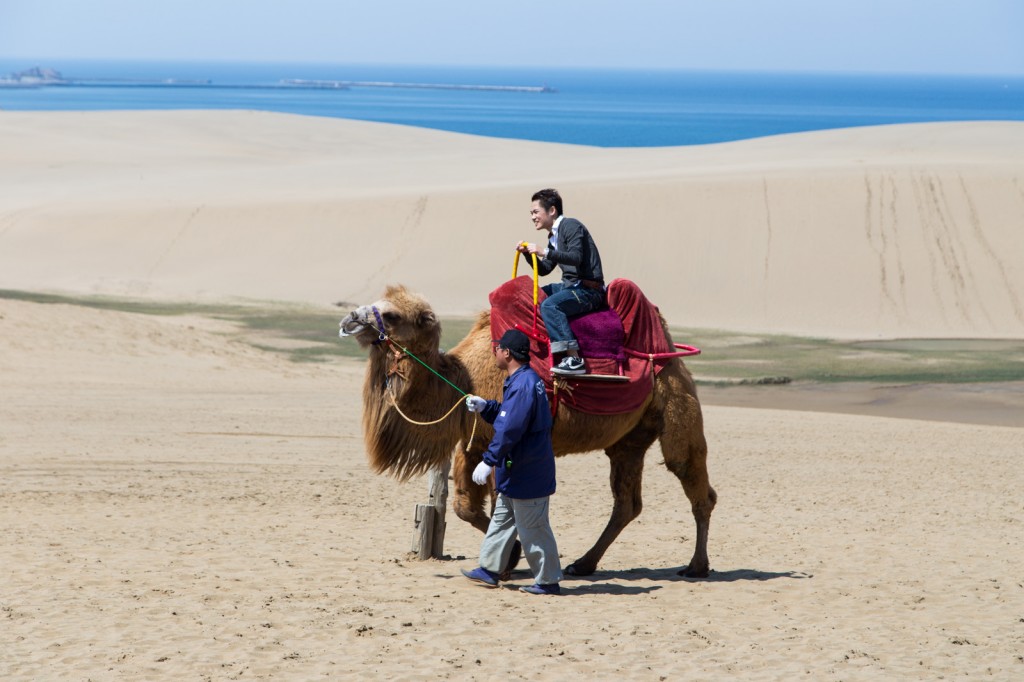



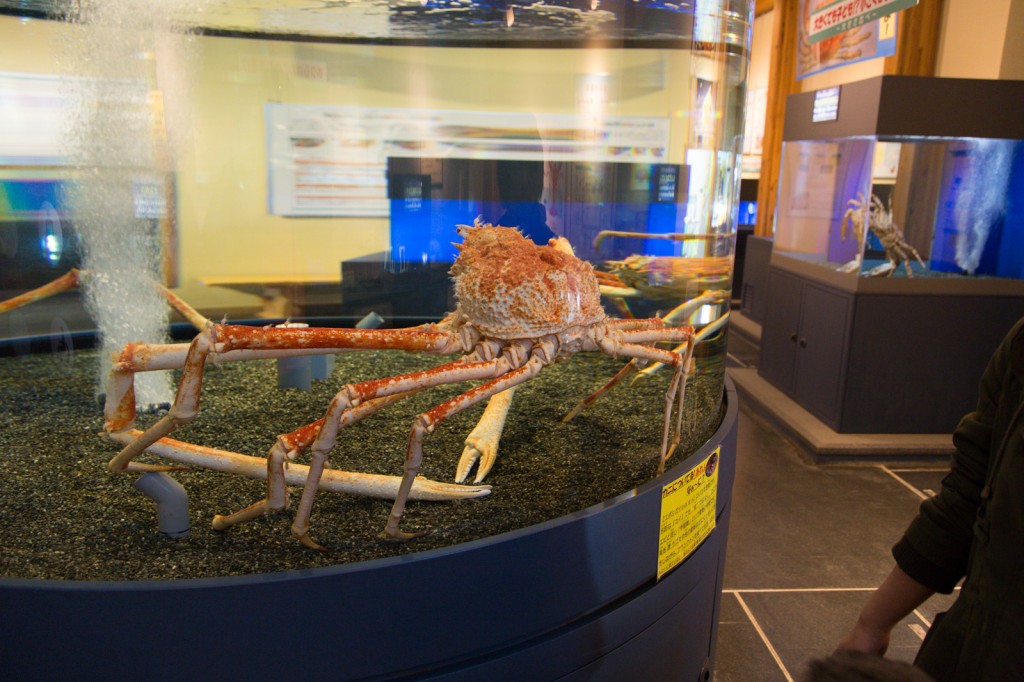

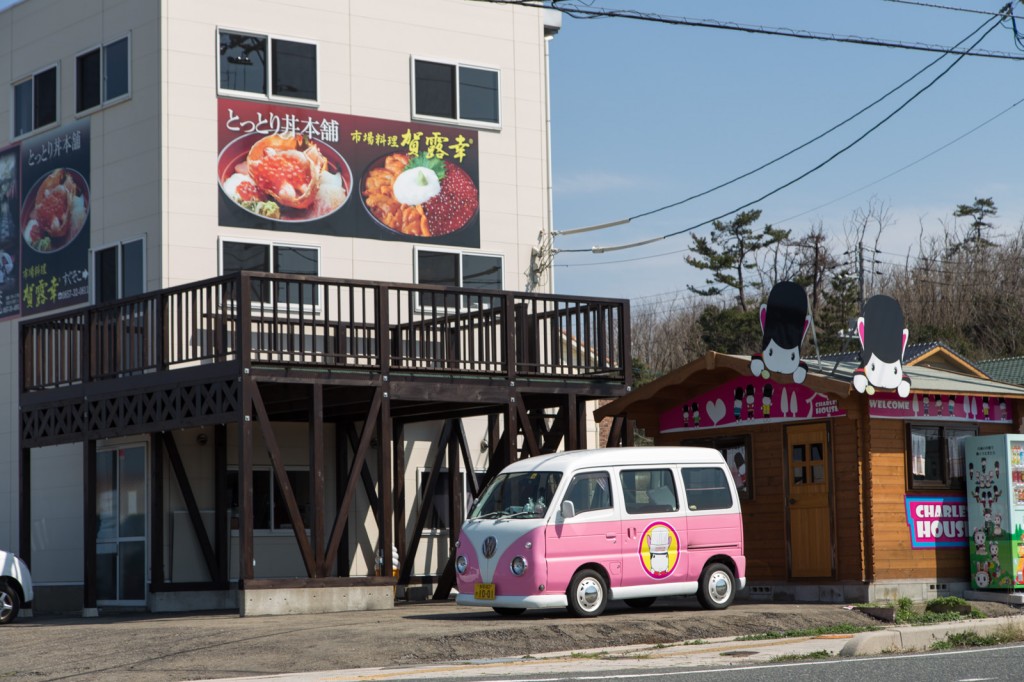


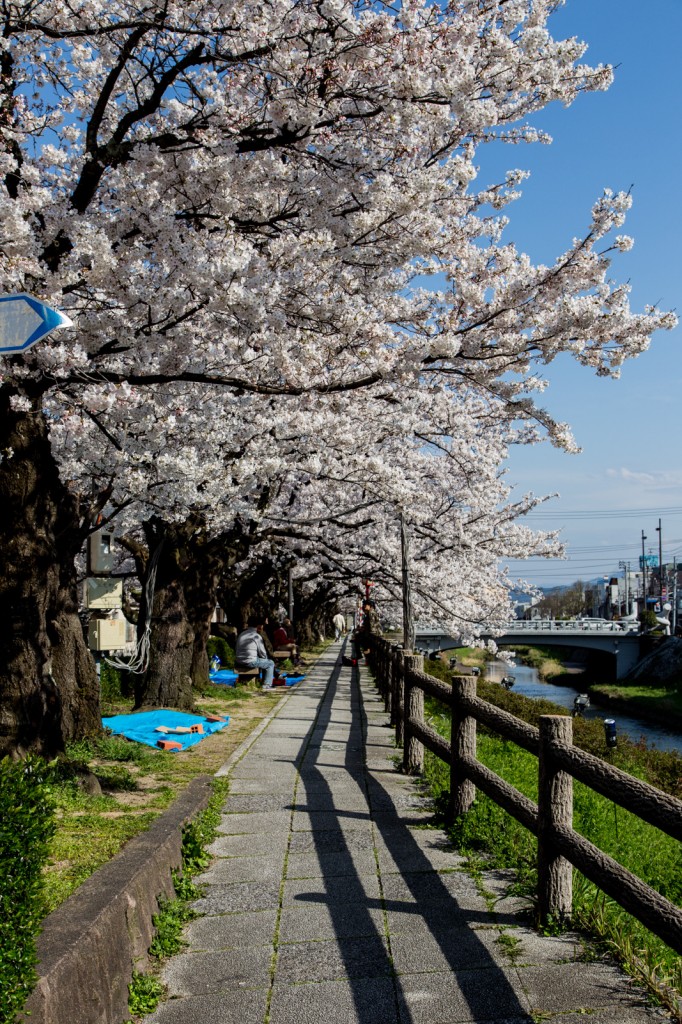
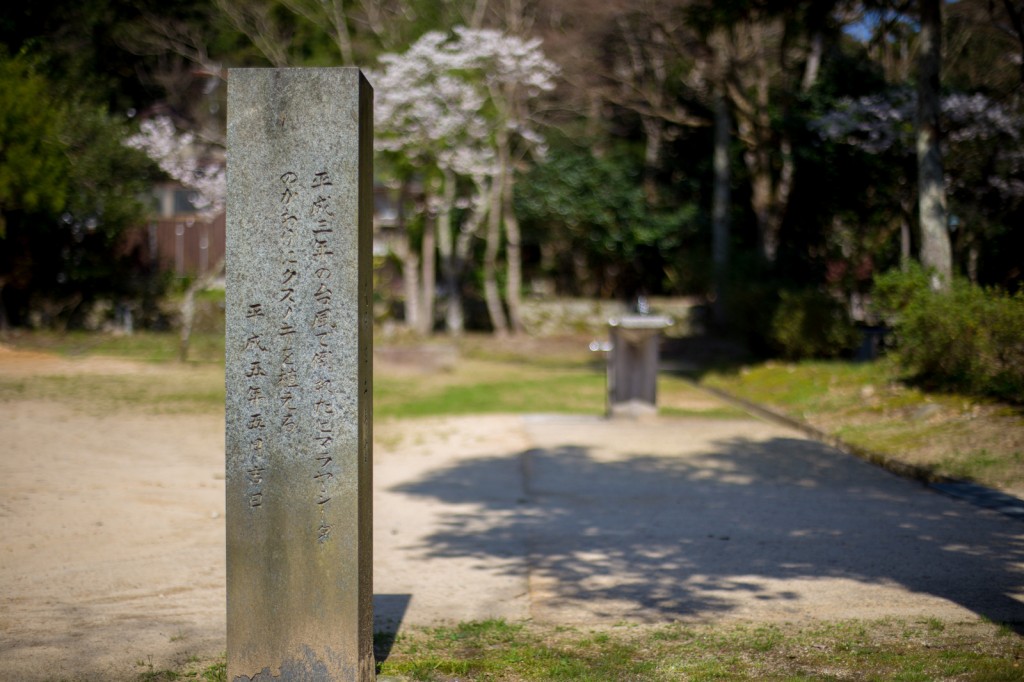
Wow…I’ve been in Japan nearly twenty years, and I never realized that there was a place like those sand dunes! I guess I need to get out of Tokyo more often…
Yeah, that was my very feeling too when a relative told me about it last year. Further proves my point that EVERYTHING can be had in Japan. Even sand dunes with camels. 😀